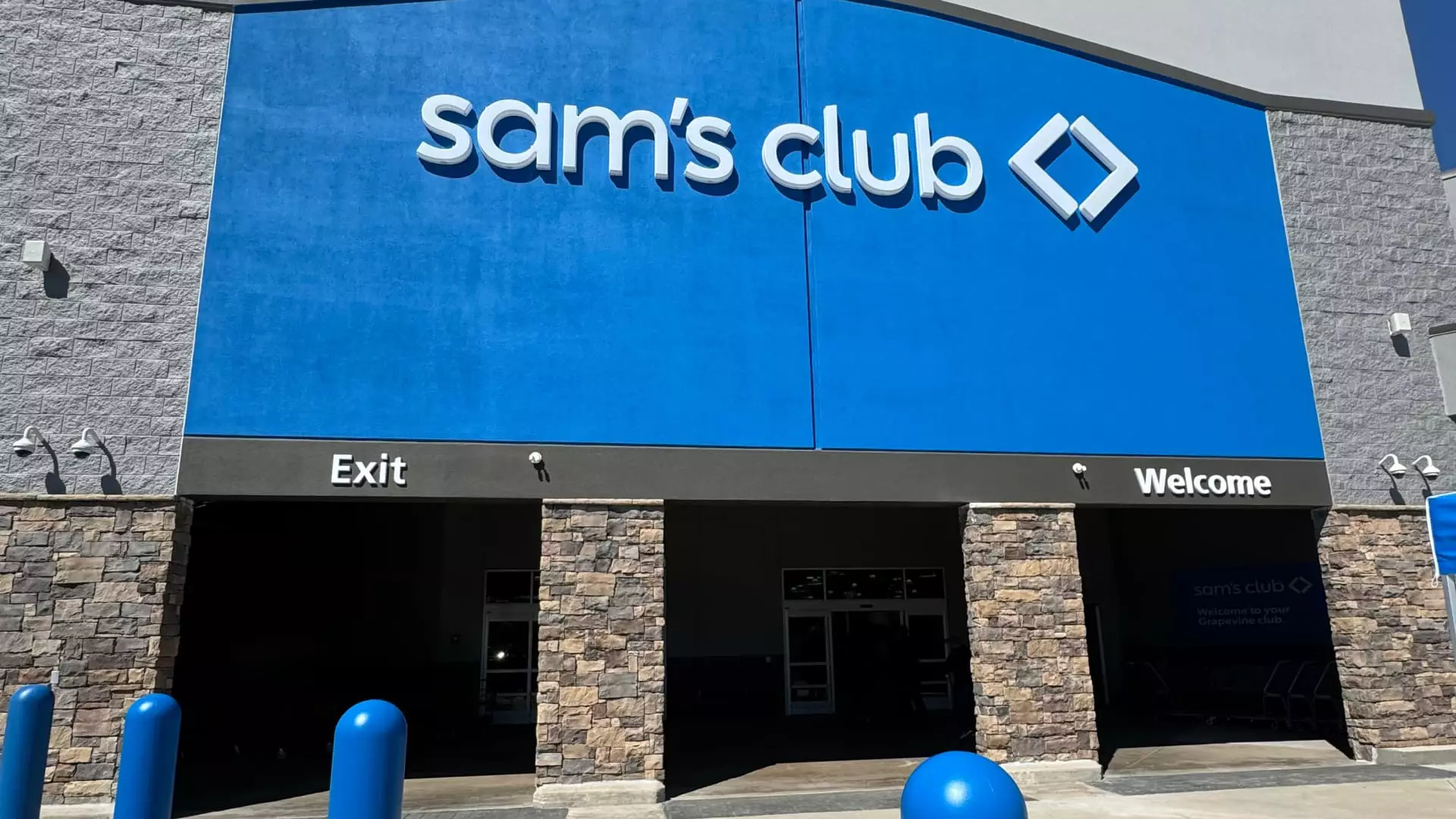In an age where convenience and technology reign supreme, Sam’s Club has taken a bold step forward by launching its first all-digital store in Grapevine, Texas. This innovative membership retail space aims to redefine the shopping experience for its members, offering a glimpse of the future of retail. With features like zero checkout lanes, a reliance on smartphone apps, and tech-savvy shopping tools, Sam’s Club is clearly positioning itself to compete with rival Costco while enhancing customer experiences.
At the heart of this groundbreaking store is the Scan & Go app, which enables customers to check out seamlessly as they browse. This technology transforms the shopping journey into a more streamlined experience; consumers can actively engage in their purchasing decisions without the hassle of traditional cash registers. Instead of wondering where to pay, they’ll find an array of online exclusive merchandise displayed where cash registers would typically be located—such as extravagant items like a 12-foot Christmas tree and a lab-grown diamond.
Sam’s Club CEO Chris Nicholas emphasizes the innovation as a “physical manifestation of a journey” that reflects the company’s mission toward digital engagement. This transformation illustrates a major shift in how consumers interact with retail environments, moving toward a more personalized and tech-oriented shopping experience. By eliminating checkout lines, Sam’s Club aims to eradicate a major pain point that has long frustrated warehouse shoppers.
Learning from Competition and Adaptation
Sam’s Club’s development is not merely a whimsical venture but a strategic move to close the gap with Costco, often hailed as the “king” of warehouse clubs. While both retailers boast a similar number of U.S. locations, Costco outpaces Sam’s Club in revenue, pulling in nearly double due to its strong private label brand, Kirkland. Sam’s Club’s recent consolidation of private labels to a single brand, Member’s Mark, is part of a broader strategy to enhance shopping experiences and streamline operations.
By diversifying its offerings—like having dedicated chefs create fresh sushi on-site—Sam’s Club is capitalizing on the evolving demands of today’s consumers. This adaptation not only enriches the shopping experience but also provides a unique selling proposition compared to its competitors. Furthermore, with the opening of The Clubhouse in Bentonville, Arkansas, the company has indicated its commitment to continually innovating and brainstorming future initiatives that can further differentiate itself from Costco.
Sam’s Club has set the ambitious and aggressive goal of opening approximately 30 new stores within the next five years. This expansion reflects the company’s confidence in its ability to grow through improved customer engagement and operational efficiency. According to financial metrics, the retailer has reported a commendable 5.2% growth in comparable sales, alongside striking e-commerce growth of 22% year-over-year. Such growth is a positive indication that the company’s technological investment is resonating with its customer base.
Moreover, an investment in human resources is equally critical. Sam’s Club plans to raise the average hourly wages for around 100,000 employees, which should improve retention and boost morale ahead of the hectic holiday season. By ensuring that workers are well-compensated and equipped for their roles, the company can better serve its customers—and, in turn, enhance overall shopping experiences.
Despite the advanced technologies being employed, Sam’s Club recognizes that not all customers may be enthusiastic about a fully digitized shopping experience. Technology can be intimidating, especially for individuals who may not be familiar with shopping apps or scanning tools. As Tiffany Zuniga, a local shopper, expressed concerns about potential challenges with the new system, it highlights an important consideration.
Sam’s Club must strike a careful balance between innovation and personal customer service to maintain its loyal customer base. While the company aims to train staff to assist members in using the Scan & Go feature, it’s crucial to ensure that the human element remains a vital part of the shopping experience. Retaining staff who can provide assistance and guidance will ensure that customers do not feel alienated in a store that heavily relies on technology.
Sam’s Club’s all-digital store represents more than just a retail shift; it symbolizes an evolution in consumer behavior and shopping norms. As technology continues to transform the industry, organizations must adapt to retain relevance. Whether this ambitious rollout will successfully navigate the complexities of consumer preferences remains to be seen. However, it’s clear that Sam’s Club is poised to make significant strides by embracing technology while remaining attuned to the needs and preferences of its customers. It will be fascinating to see how this venture unfolds and influences the broader landscape of retail moving forward.

Leave a Reply